Nikon
Pro Normal Zooms
© 2007-2019 KenRockwell.com
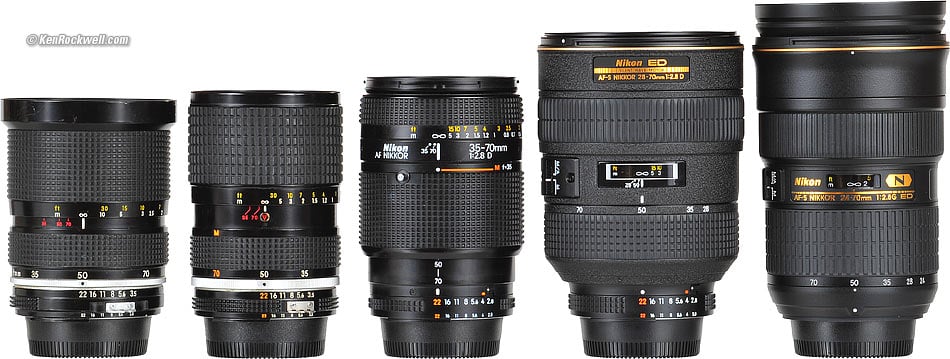
Nikon 35-70mm f/3.5 AI, 35-70mm f/3.5 AI-s, 35-70mm f/2.8 AF-D, 28-70mm f/2.8 AF-S and 24-70mm f/2.8 AF-S.
May 2019 Better Pictures Nikon Reviews Nikon Lenses All Reviews
Update: the newest 24-70/2.8E VR (2016) is sharper, but more distorted than any of these. It's also the biggest, heaviest, most expensive and plastikiest.
Introduction
I wanted to compare the two newest AFS zooms against each other. I decided to throw in the older 35-70mm AF just for fun. While I was at it, I decided to wrangle the two older manual focus versions for a big shootout on the full-frame Nikon D3.
Compared here are the:
35-70mm f/3.5 AI (1977-1981)
35-70mm f/3.5 AI-s (1981-1987)
35-70mm f/2.8 AF-D (1987-2006)
28-70mm f/2.8 AF-S (1999-2007) and
24-70mm f/2.8 AF-S (2007- )
I'm going to skip the two versions of 43-86mm f/3.5 zoom simply because I've already spent almost two weeks at this and because they don't zoom to 35mm. There isn't enough overlap to make sense to include them here.
Layout
Blocks of six images layout well on a page, but I only have five pro zooms. Therefore I'm going to throw a guest lens into each comparison just to be a wise guy.
At 35mm I threw in the 35mm f/2.8 AI manual-focus (1979-1981), which only cost me $25 used.
At 50mm I threw in the current 50mm f/1.8 D (2002 - ) so you can see how well a $110 non-zoom works against these expensive pro zooms.
At 70mm I threw in the awful 35-70mm f/3.3-4.5 AF so you can see how good all these other lenses really are by comparison. This crummy lens is still soft at f/8!
These are pro zooms and I'm writing for pros, who usually have at least one 30" monitor in their studio setup (now down to $1,800 and it will last longer in your setup than any digital camera). All six crops fit easily on a 30" screen. My apologies to those with smaller screens; smaller crops would have made it much harder to see anything.
Consistency
A huge benefit of the quality of all these lenses is that they are consistent enough to support a comparison like this.
When I've made the same comparison shots with wide zooms, there is so much variation from one corner to the next and one shot to the next due to mechanical play in the zooms that there was no sensible way to present a comparison. For instance, comparing the Canon 17-40mm L to the 16-35mm L II, I would come up with different results depending on which corner I used. Therefore I never attempted to publish any comparison examples, since wide lenses can vary so much.
This variation comes from the mechanical play in a zoom. Shake your zoom, and there is a lot of glass wiggling around inside. Crummier lenses have bigger tolerances, and wide lenses require much smaller tolerances. Most wide lenses, when looked at this closely, will exhibit variation from shot-to-shot as the various optical groups wiggle around in the barrel!
The fact that all of these lenses here are the very best professional lenses Nikon can make, with reasonable focal length ranges and very tight mechanical tolerances is why I got consistent results shot-to-shot and corner-to-corner. This speaks very highly of every single one of these lenses. I usually can't do this with amateur and wide zooms.
Warning One:
These lenses, except for the awful 35-70mm f/3.3-4.5 AF, are all very, very sharp. I'm going to have to do some real fooling around to make them look otherwise. What I'm actually doing in this comparison is to misuse these lenses, and then show which are most resistant to misuse.
Specifically, it is misuse to shoot on a tripod at f/2.8 in broad daylight and look in the corners, but since that's where the biggest visible differences lie, that's all I'm going to show.
Warning Two:

Red box shows crop area.
These images are all crops from 100% images shot at ISO 100 on my D3. The full images would be 43" (110cm) wide at this magnification. I never print this large; do you?
These are so highly magnified and made under such special conditions (a mountain top with everything below is at infinity and therefore in focus) that I'm showing differences too minute to be significant for almost any sort of photography.
Each crop is only 460 x 460 pixels out of a 4,256 x 2,832 pixel image, or less than 2% of the entire image. I'm showing the worst possible 2% of each image: the very far corner.
Since each crop shows the top right corner of each full camera image, the top right of each crop below is the actual far top right of the original image, and will be the softest. As you notice how much better the bottom left of each crop looks, realize that that bottom left corner of each crop is still the corner, and it keeps getting better as you approach the center.
Warning Three:
All these lenses look almost identically sharp in the center. Since it takes me forever to jack all these images around in Photoshop in order to present them here, I'm only going to show the very farthest top right corner of each image.
How to Look at These
Most of us will look at the results at the wide end and form an opinion as to which lens is best.
Now look at tele, and you'll see different lenses are best. Now which is the best lens overall? This is why it's so difficult to pronounce any lens as the sharpest!
Remember that these are just tiny crops from the corner. The centers and most of all of the images looked identically excellent with all these excellent lenses.
All these lenses are so good as far as sharpness that I would select among them on other factors, like price, distortion and size.
When you see what looks like camera or subject blur; in actuality it is the lens' aberrations. Remember we're looking at only a corner.
Weight
These are the weights I actually measured on an analytical balance. They don't necessarily agree with Nikon's PR figures. These figures don't include the hood or caps.
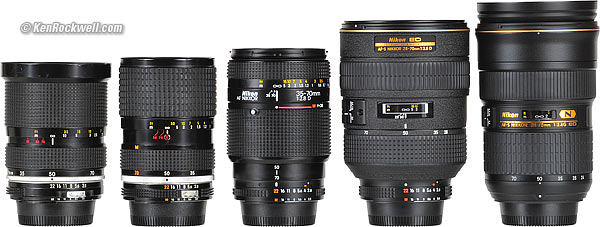
19.000 oz. |
18.060 oz. |
23.430 oz. |
31.265 oz. |
31.820 oz. |
538.6 g |
511.9 g |
664.25 g |
886.3 g |
902.05 g |
THe newest 24-70mm f/2.8 VR weighs 37.6 oz./1,067 g.
I don't mind carrying the lighter lenses. The two biggest ones, at two pounds (one kilo) each are too heavy for me to want to carry on a camera around my neck.
Distortion
See the individual reviews for the exact distortion characteristics of each lens.
Here are the RMS (SQRT (((D1^2) + (D2^2) + ... (Dn^2))/n)) of the distortion values over every tested focal length for each lens. RMS shows us the overall distortion power of each lens, meaning it provides extra penalties for lenses which have large amounts of annoying distortion at any setting, and downplays distortion that's minor. Calculate this any other way and you'll get different results, so feel free to resort to your own mathematical derivations.
RMS Distortion Power |
|
0.76 |
|
| 0.86 |
|
2.09 |
|
1.88 |
|
2.58 |
|
3.18 |
|
- - - |
- - - |
0.5 |
|
0.2 |
|
35-70mm f/3.3-4.5 AF |
2.62 |
As expected, the f/3.5 zooms have negligible distortion, and the f/2.8 zooms are worst. The 24-70mm is the very worst at its 24mm setting.
Flare and Ghosts
The only lens with any problem is the oldest 35-70mm f/3.5 AI, which has some veiling overall flare if the sun gets in the lens. Use a hood. All the other lenses are fine.
The issue with my 35-70mm f/3.5 AI could be that it has a spot of fungus inside it. That's what I get for buying it over eBay where it was listed as having "no fungus." See the chances I take getting this stuff to review for you people?
Vignetting
At f/2.8 and f/4 you may see darker images since I'm only showing the corner.
Then again, aperture calibrations vary, so don't read too much into this.
Tech
I used Manual exposure, a tripod and fixed (direct sun) WB, D3, 100 ISO.
I saved all the crops from Photoshop as Save For Web, 80% quality, which has no loss in visual quality. Heck, even at 40% I rarely can see any difference.
When I first ran these, the 28-70mm looked hideous at 50mm and 70mm. I tried again, and it still looked awful. On my sample of D3 with the sample of 28-70mm I was loaned, I needed to dial in -15 in the AF Fine Tune menu (second to last in the wrench menu) to fix this. Now the results at 28mm and 35mm were also a little out of focus instead. I therefore used the best (uncorrected) examples at 28mm and 35mm for the 28-70mm, and the corrected examples at 50mm and 70mm. This is cheating! It's why you'll see the light looks a little different on the 50mm and 70mm shots with the 28-70mm, since they were made the next day at the same time. It also gives the 28-70mm an advantage I didn't afford the other lenses. Tough, I spent over a week of my life on this comparison and cannot devote another three weeks to try every possible combination. If you want to see the 28-70mm on the same level as the others, it is shot under the same conditions at 28mm and 35mm, but know that the results at 50mm and 70mm were far inferior to any other lens before I added the correction.
Your results with the 28-70mm will be different, so I won't sweat this unless I hear other stories of consistent AF errors with the 28-70mm.
24mm 24mm 28mm 35mm 50mm 70mm top
Since the only lens that covers 24mm is the 24-70mm f/2.8 AF-S, I'll show it's performance at each aperture right here.
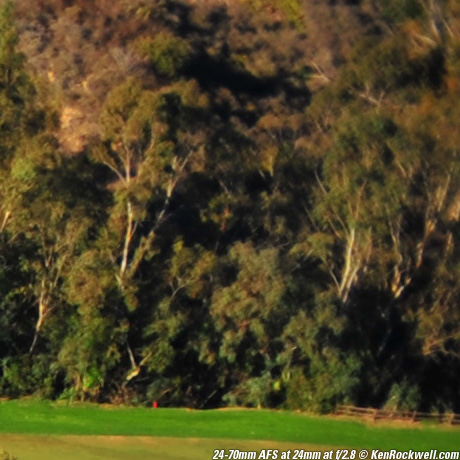 |
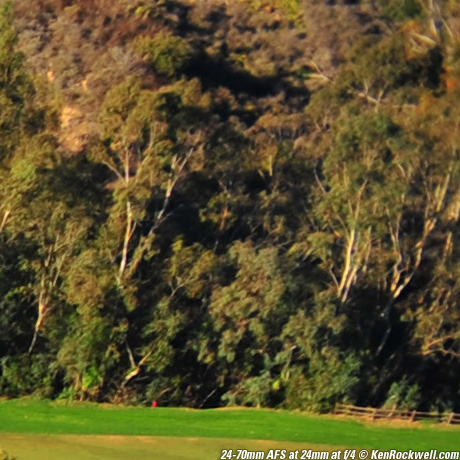 |
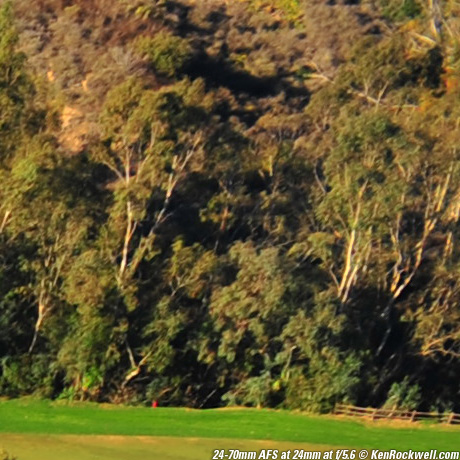 |
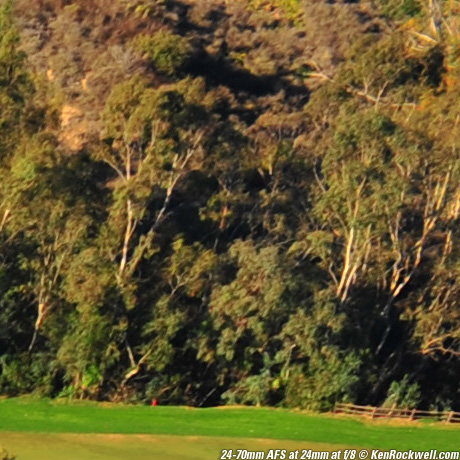 |
28mm 24mm 28mm 35mm 50mm 70mm top
Since only two of the lenses cover 28mm, I'm going to show then side-by side at each aperture.
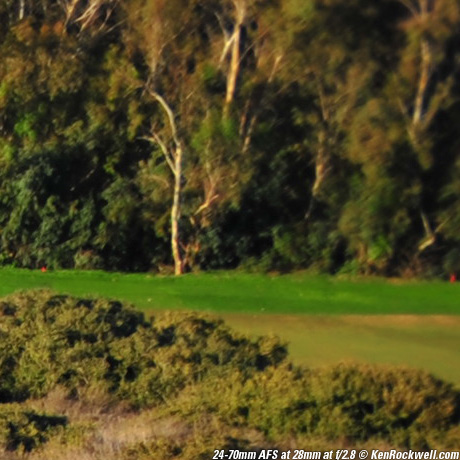 |
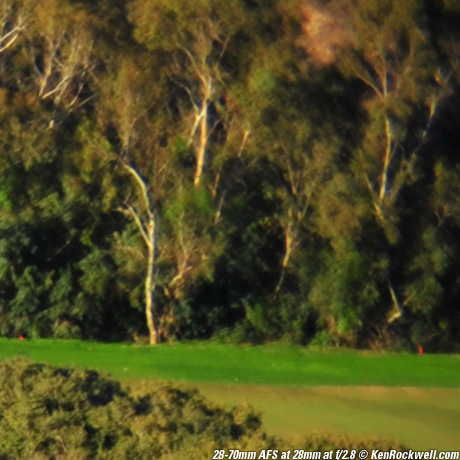 |
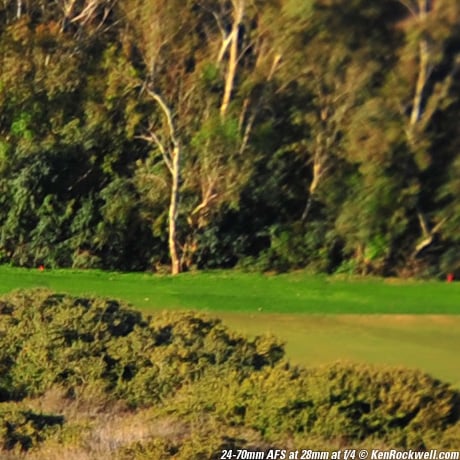 |
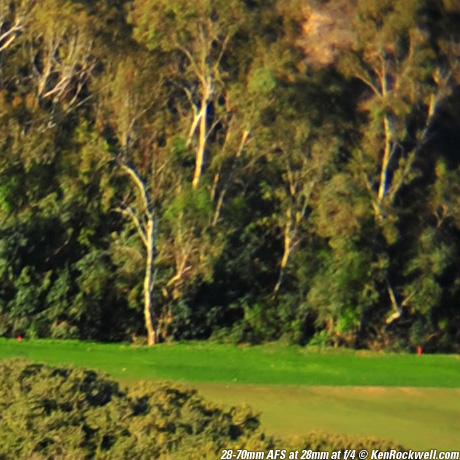 |
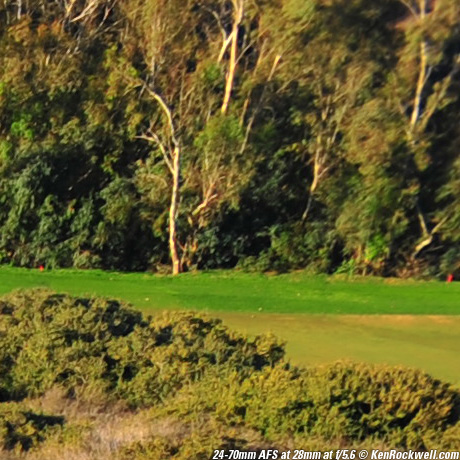 |
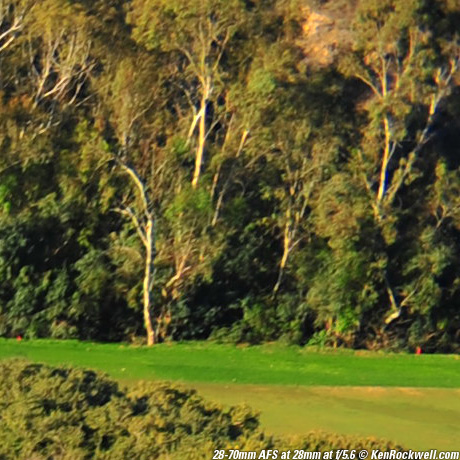 |
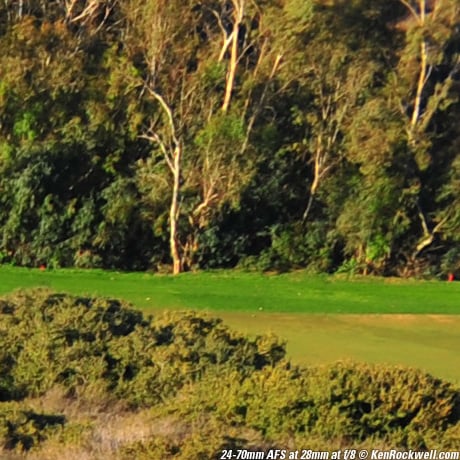 |
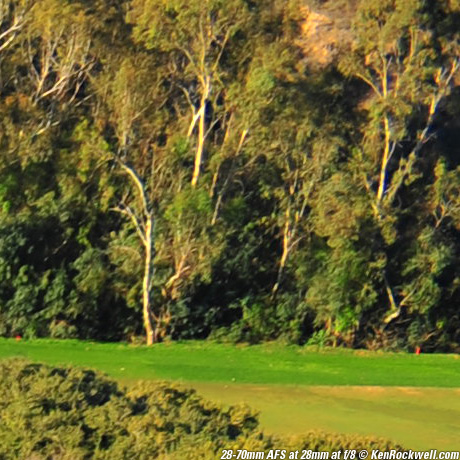 |
35mm 24mm 28mm 35mm 50mm 70mm top
f/2.8. Neither of the manual focus lenses go to f/2.8, so I show only four examples.
 |
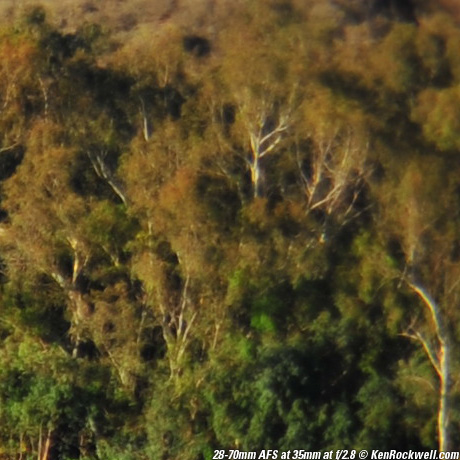 |
 |
 |
35mm at f/4:
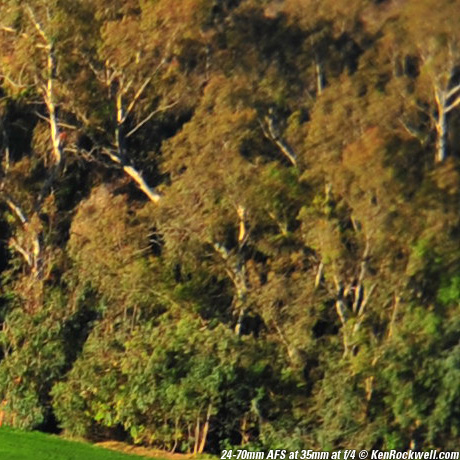 |
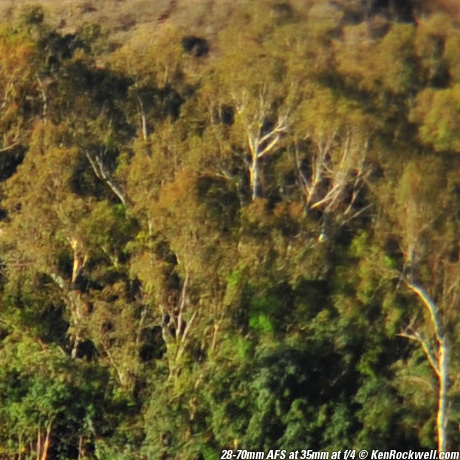 |
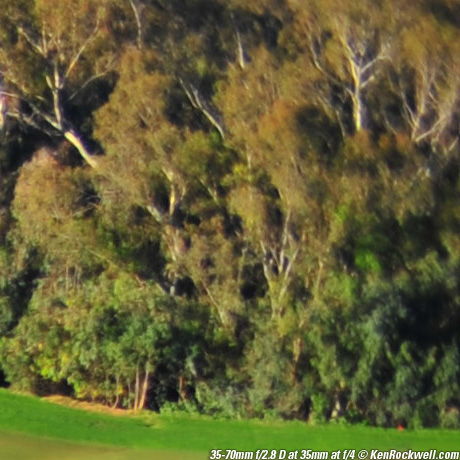 |
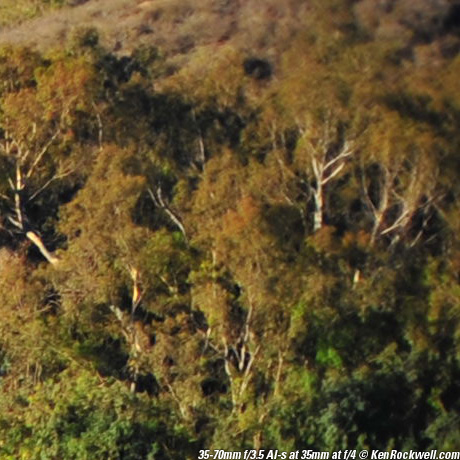 |
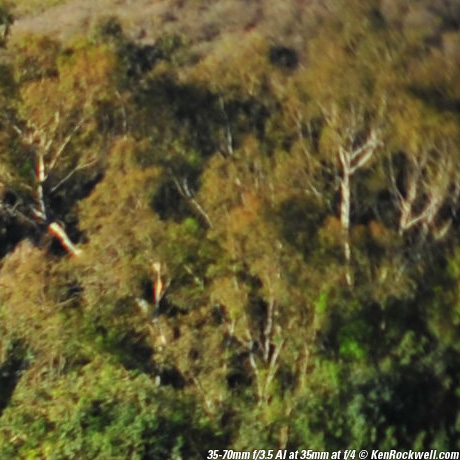 |
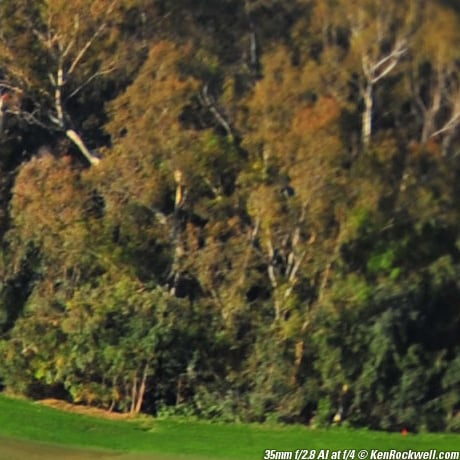 |
35mm at f/5.6:
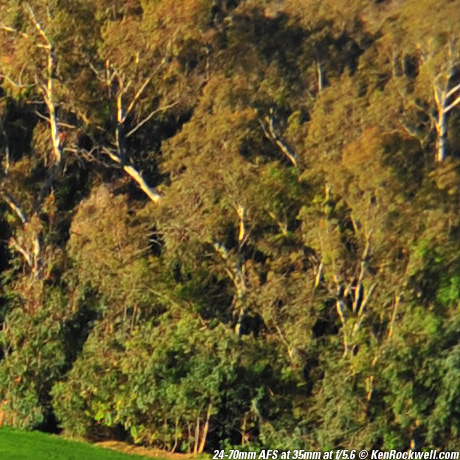 |
 |
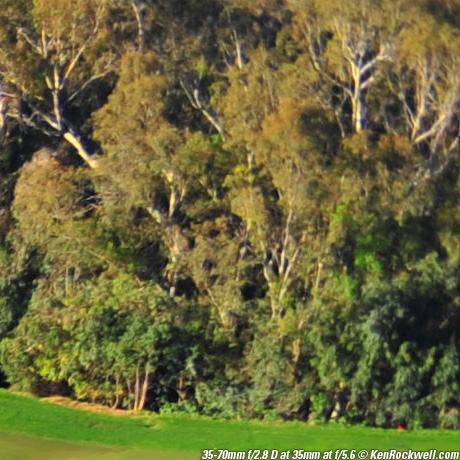 |
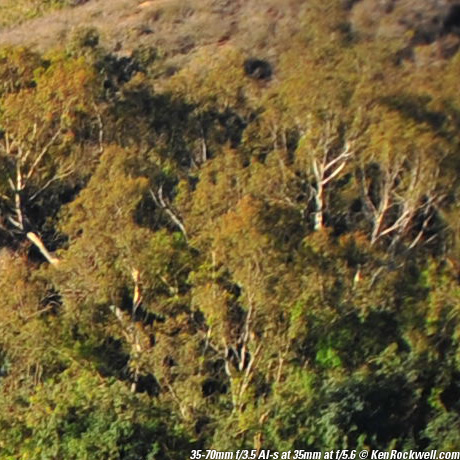 |
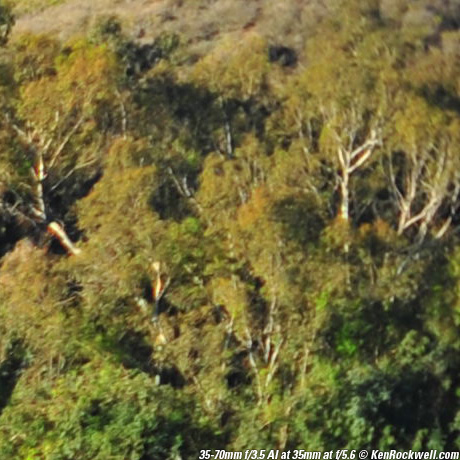 |
 |
35mm at f/8:
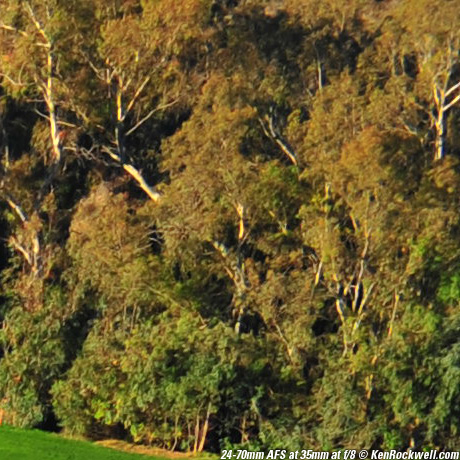 |
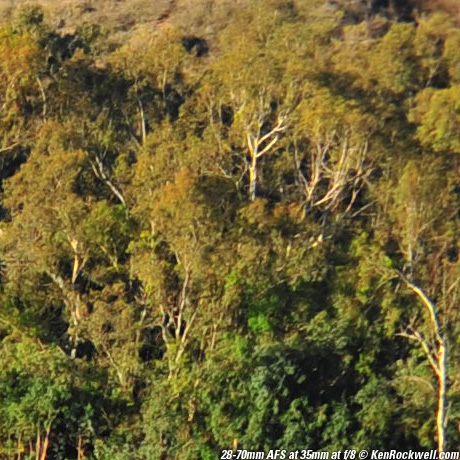 |
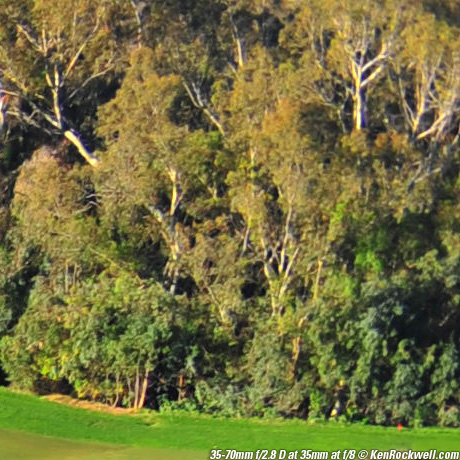 |
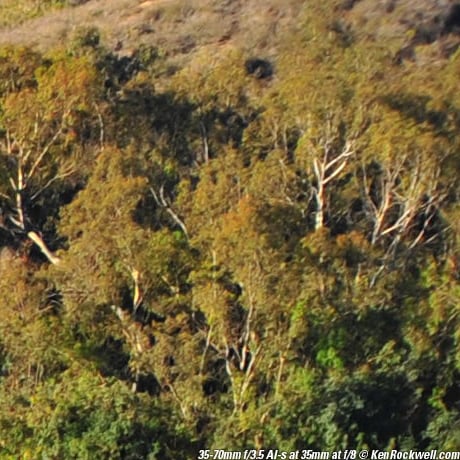 |
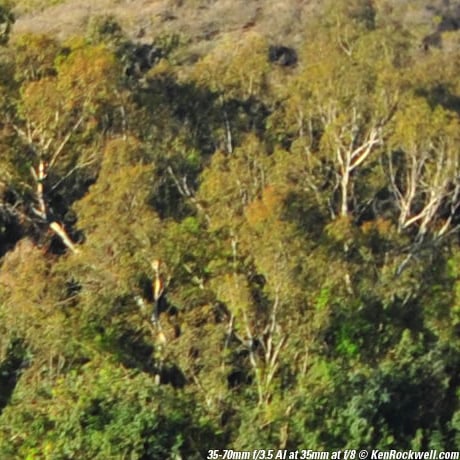 |
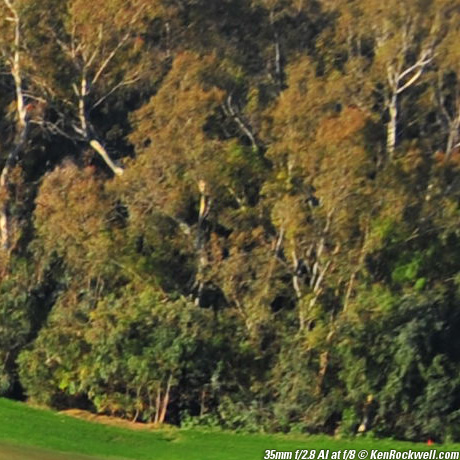 |
50mm and 70mm are continued on Page Two of the Nikon Pro Normal Zoom Comparison.
PLUG
If you find this as helpful as a book you might have had to buy or a workshop you may have had to take, feel free to help me continue helping everyone.
Thanks for reading!
Ken
